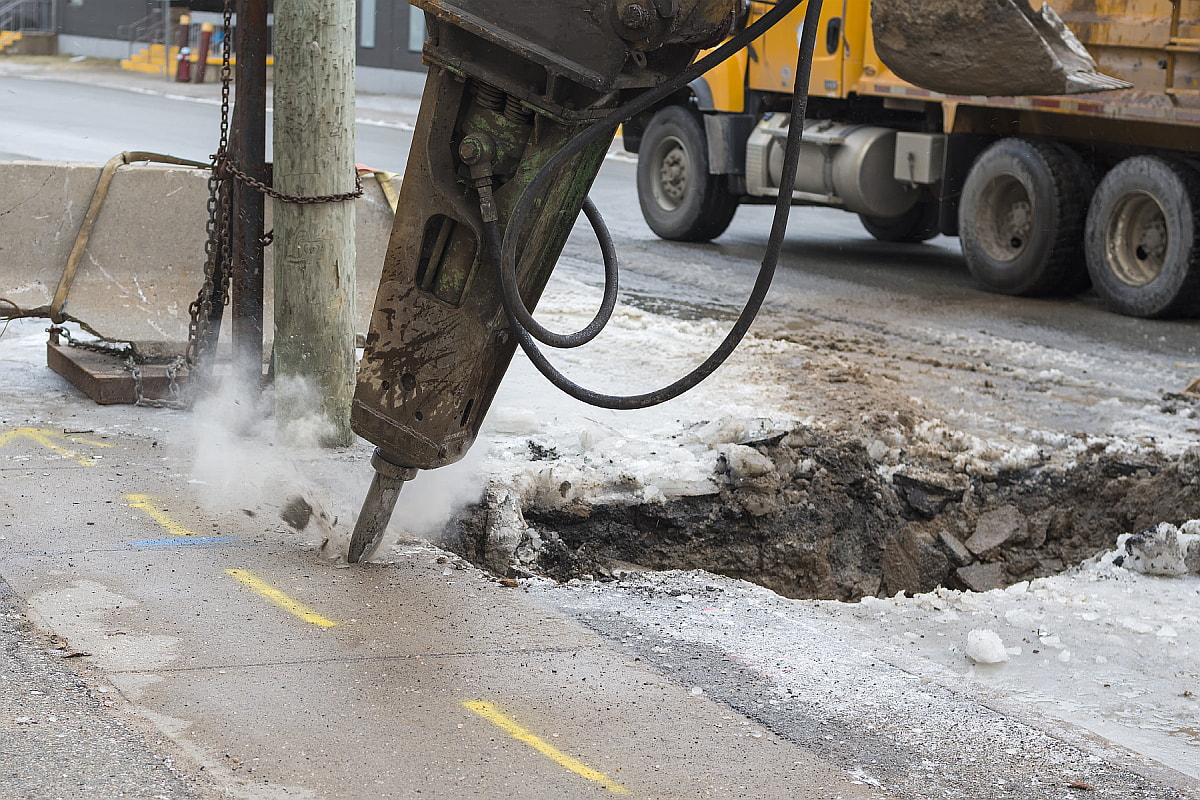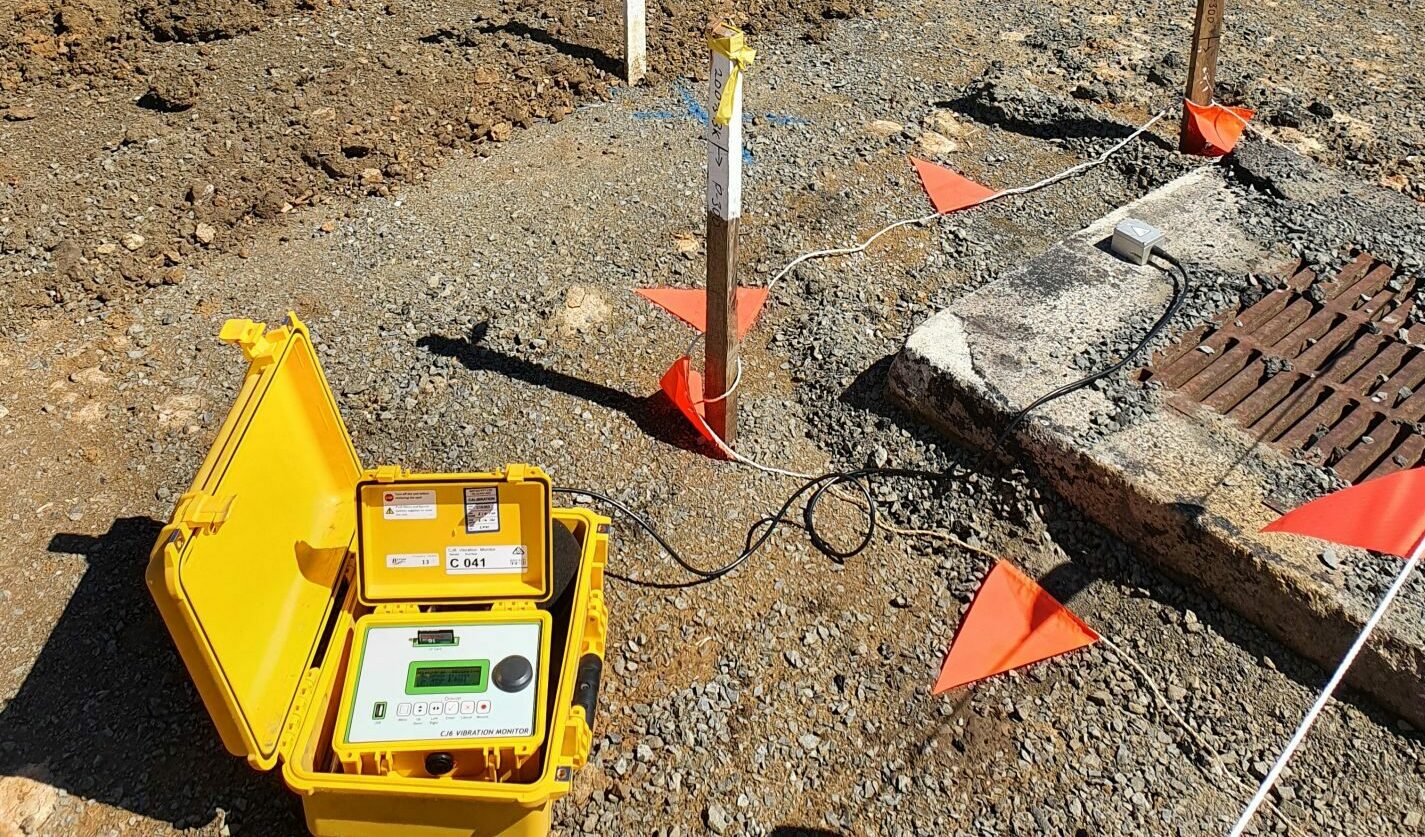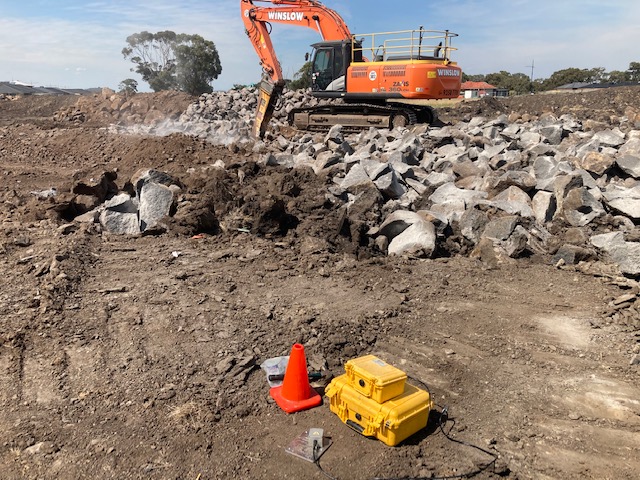Ground Vibration
Some construction activities generate ground vibration. Pile driving, rock breaking and dynamic compaction can be a source of annoyance and concern to occupants and owners of neighbouring buildings.
While there is currently no regulation for limiting ground vibration from construction sites, companies may need to demonstrate that ground vibration from their work sites are not causing damage to neighbouring structures.


Vibration Control
Vibration can be measured and therefore controlled. Ground vibration monitoring is a useful tool for understanding the effect construction vibration has on neighbouring buildings, their occupants and infrastructure.
Monitoring can also help prevent damage to neighbouring structures and reduce the potential for damage claims. Vibration monitoring is a good proactive measure for projects with close neighbours and may also be implemented to address concerns or complaints from occupants of nearby buildings. Increasingly, many projects now have ground vibration monitoring as a mandatory part of the job scope.
INFRASTRUCTURE
Ground vibration limits typically apply at infrastructural assets including buried gas mains, sewers, water mains and drainage, and overhead power transmission poles and towers. If vibration monitoring is required, Terrock has the equipment and expertise to ensure vibration levels from nearby works remain in compliance with the conditions set by the asset owners.
In certain situations, a brief period of monitoring may be required to confirm the peak ground vibration levels generated from onsite activities. In other situations, long-term or continuous monitoring may be required.


